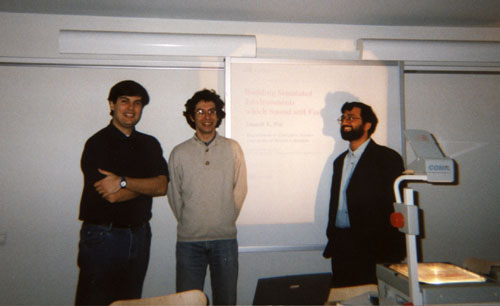|
|
Équipe Analyse/Synthèse |
Invited lecturer: Dinesh K. Pai - University of British Columbia - Canada

To be useful, a simulated environment should be both compelling and
sufficiently accurate. For instance, in telerobotics, a virtual
environment can be used to overcome the effects of communication delay
and to make robots easy to program. Such an environment must
accurately simulate the relevant physics of the remote site, while
providing salient visual, haptic, and auditory cues at interactive
rates. I will describe some of the work in our lab at the University
of British Columbia towards these goals.
First, I will describe a virtual environment interface for
telerobotics, developed in our lab. The system is designed for
programming contact tasks such as assembly and surgery, using force
control and model-based vision.
I will then describe physically-based simulation of sound produced by
colliding objects in such virtual environments. The computed sounds
depend on the material of the body, its shape, and the location of the
impact.
Haptic interfaces provide kinesthetic feedback and enhance the sense
of realism of simulated environments. I will describe haptic
interaction with multiresolution geometric models extracted from image
data.
Dinesh Pai:
Links about his research at Univ. British Columbia: